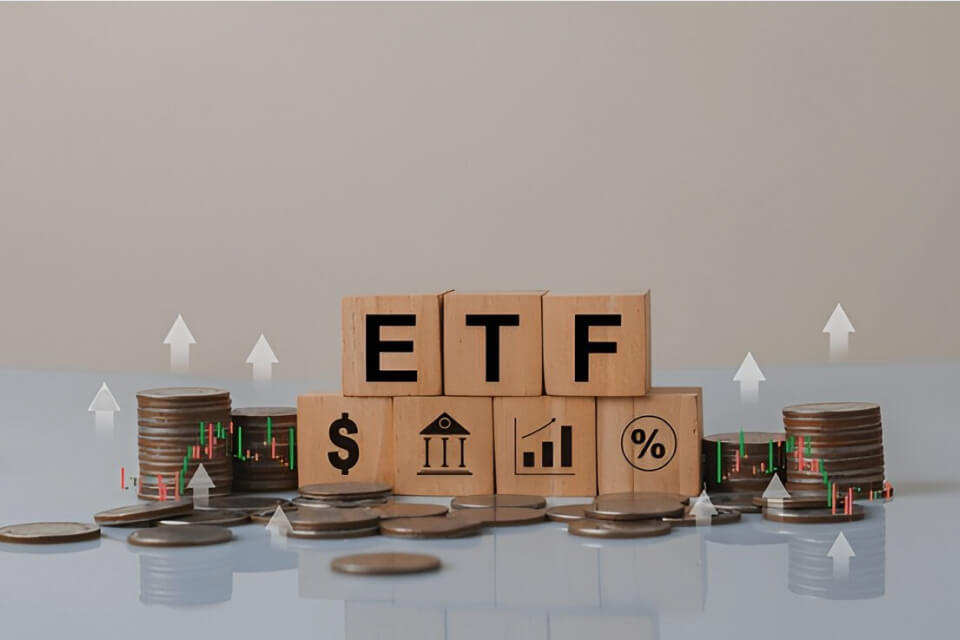- Introduction
- Key Metrics for Analyzing the Performance of ETF Investments
- Comparative Analysis of ETF Performance
- Risk-Adjusted Measures for ETF Performance
- Considerations for Long-Term Performance Evaluation
- Using Performance Analysis for Decision-Making
- Tools and Resources for Analyzing ETF Performance
- Leveraging Resources for Comprehensive Analysis
- Frequently Asked Questions (FAQs)
- Conclusion
Introduction
Investing in Exchange-Traded Funds (ETFs) has, without a doubt, become a cornerstone for many investors who want diversified market exposure. However, success with ETFs goes beyond just the initial investment. In fact, it depends heavily on continuously reassessing and adapting your portfolio. Therefore, in this article, we will explore the complexity of analyzing ETF performance. We will look closely at key metrics, comparative analysis, risk-adjusted measures, and long-term considerations. Altogether, these insights will help guide your decision-making. So, let’s embark on this journey to optimize your ETF investments for sustained success.
Evaluating ETF Performance: An Overview
Understanding the dynamics of ETF performance evaluation is the first step toward informed decision-making. The metrics you choose to focus on play a crucial role in assessing the effectiveness of your investment strategy.
At its core, analyzing the performance of ETF investments involves evaluating how well your investments are doing relative to your financial goals. It’s not just about returns; it’s about aligning your portfolio with your objectives.
Connection to Investment Success
Successful investing isn’t just about picking the right ETFs at the start. Instead, it’s a dynamic process that requires continuous evaluation and adjustment. Therefore, by doing this, you better position yourself for long-term success.
Whether you’re new to ETFs or a seasoned investor, understanding how to evaluate performance is absolutely paramount. In fact, novice investors gain key insights to build a solid foundation, while seasoned investors refine and improve their strategies.
Key Metrics for Analyzing the Performance of ETF Investments
Investing in Exchange-Traded Funds (ETFs) can be a powerful strategy, offering diversification and exposure to various sectors. To navigate the complex landscape of ETFs successfully, understanding and analyzing key metrics is paramount.
Understanding ETF Performance Metrics
Understanding the overall performance of your ETFs is, above all, fundamental. First, it provides a clear snapshot of how well your investments are doing. Then, it serves as an essential starting point for deeper analysis. Additionally, analyzing historical performance helps investors better gauge the fund’s ability to deliver consistent returns.
Furthermore, delving into specific metrics allows for a more nuanced evaluation. For example, metrics like expense ratios and tracking errors quickly become critical when assessing the overall efficiency of an ETF.
Comparative Analysis of Different Metrics
Comparing metrics across different ETFs is, in many ways, like benchmarking. In fact, it’s not just about absolute performance; rather, it’s about how an ETF stacks up against its peers. Therefore, delving into specific metrics—such as expense ratios, tracking error, and yield—offers a much more nuanced evaluation. Moreover, each metric provides unique insights into the efficiency, tracking accuracy, and income generation of an ETF.
Real-World Examples Illustrating Metric Impact
Imagine you’re choosing between two ETFs, let’s call them ETF A and ETF B. Both ETFs have similar returns, meaning they’ve made about the same amount of money for their investors. However, now let’s focus on a key metric called the expense ratio.
The expense ratio is basically a fee that the fund manager charges for managing the ETF. So, even though ETF A and ETF B have similar returns, ETF A has a lower expense ratio. But what does this mean for you, the investor? Well, that seemingly small difference can actually make a big impact on your long-term savings.
Here’s why: over time, those fees add up. Because ETF A has a lower expense ratio, it means you’re paying less in fees to keep your money invested. As a result, this can lead to significant savings in the long run. So, even though the returns are similar, you get to keep more of your money with the ETF that has the lower expense ratio.

Comparative Analysis of ETF Performance
Now, let’s talk about comparative analysis. Essentially, this is like comparing how well different ETFs are performing within a specific group or category.
For example, imagine you have a collection of ETFs that all focus on technology companies. Each ETF acts like a team of stocks working together. Therefore, comparative analysis involves looking at all these teams to figure out which one is doing the best job. Consequently, this approach helps identify standout performers and highlights potential areas for improvement in your portfolio.
Moreover, benchmarking is the cornerstone of comparative analysis. By establishing a benchmark, you gain valuable insight into how well your chosen ETFs perform relative to a standard.
Finally, when you revisit the case study involving two ETFs with similar objectives, comparing their performance across different market conditions helps reveal which one is more resilient and better aligned with your long-term goals.
Risk-Adjusted Measures for ETF Performance
ETF Investing inherently involves risk, and understanding how risk impacts performance is crucial for making informed decisions. Risk is not a one-size-fits-all concept. Different investors have varying risk tolerances, and recognizing your comfort level is the first step in managing risk.
Analyzing ETF Performance with Risk Adjustments
Risk-adjusted measures, such as the Sharpe ratio, offer a much more nuanced view of an ETF’s performance. In fact, these measures factor in risk, which gives you a clearer picture of the return you get for each unit of risk taken.
Therefore, to truly assess an ETF’s performance, you must carefully consider the level of risk involved. After all, a high-performing ETF may not be the best fit if its risk profile does not align with your investment strategy.
Considerations for Long-Term Performance Evaluation
While short-term gains can be tempting, a successful ETF strategy requires, above all, a strong focus on the long term. In fact, long-term evaluation is more than just a simple check-in; rather, it’s a strategic approach to ensure your portfolio stays aligned with your evolving financial goals..
Factors Influencing Long-Term Performance
When considering factors influencing long-term performance, think about dividend growth, economic trends, and shifts in market dynamics. All of these can significantly affect how your ETFs perform over time.
That said, long-term evaluation also comes with challenges, including market volatility and changing economic landscapes. However, by acknowledging these challenges, you can better navigate them and, ultimately, make more informed investment decisions.

Using Performance Analysis for Decision-Making
Evaluating performance is not an end in itself; it’s a means to make informed decisions that align with your investment goals. Your analysis should directly inform your decision-making process. If a particular ETF consistently underperforms, it may be time to reassess its place in your portfolio.
Strategies for Effective Decision-Making
Crafting effective investment strategies requires a balanced approach, blending quantitative metrics like ROI, volatility, and expenses with qualitative considerations such as fund manager expertise, market trends, and alignment with personal investment goals. Striking the right balance between risk and reward, adapting to changing market conditions, and evaluating the long-term versus short-term objectives are essential for successful decision-making in the dynamic world of ETF investments.
Real-World Examples of Informed Decisions through Analysis
Consider a scenario where a comprehensive performance analysis leads to a decision to reallocate funds from an underperforming ETF to one with better long-term prospects. This strategic move can significantly impact your portfolio’s overall success.
Tools and Resources for Analyzing ETF Performance
In today’s tech-driven environment, investors can choose from an impressive array of tools designed to enhance their ability to analyze and understand ETF performance. These tools cater to a spectrum of preferences, from the hands-on investor to those seeking more automated solutions.
1. ETF Summary and Fundamentals:
Example: Yahoo Finance
Purpose: These tools help investors get a quick history of ETFS and Stocks, providing a consolidated view of how different ETFs contribute to overall returns.
2. ETF Screeners and Database:
Example: ETFdb
Purpose: ETF screeners allow users to filter and compare ETFs based on various criteria, making it easier to identify funds that align with specific investment objectives.
3. Advanced Analytics Software:
Example: Bloomberg Terminal, FactSet.
Purpose: Geared toward institutional investors, these platforms offer in-depth analytics, real-time data, and advanced charting tools for sophisticated performance analysis.
4. Research Platforms:
Example: Seeking Alpha
Purpose: These platforms provide market insights and expert opinions, offering a qualitative layer to supplement quantitative analysis.
Leveraging Resources for Comprehensive Analysis
Access to these tools is just the first step; understanding how to leverage them effectively is equally crucial. Here are strategies to maximize the potential of these resources for a comprehensive analysis:
1. Define Your Objectives:
Strategy: Clearly outline your investment goals and risk tolerance before utilizing tools.
Purpose: Tailoring your analysis tools to align with specific objectives ensures a more targeted and relevant assessment.
2. Continuous Learning:
Strategy: Stay updated on the functionalities of your chosen tools.
Purpose: Regularly exploring new features and updates ensures you’re making the most of the tools’ capabilities.
3. Integration of Tools:
Strategy: Integrate multiple tools for a holistic view.
Purpose: Combining the strengths of different tools creates a comprehensive analysis that considers various dimensions of ETF performance.
4. Automation for Efficiency:
Strategy: Automate routine tasks where possible.
Purpose: Automation frees up time for more strategic analysis and decision-making.
5. Seek Professional Guidance:
Strategy: Follow and read our blog for more strategy and tool recommendations.
Purpose: We provide insights into which tools align with your unique investment needs and preferences.

Frequently Asked Questions (FAQs)
1. How often should I reassess my ETF portfolio?
Regularly reassess your portfolio annually or sooner if there are significant market shifts or changes in your financial goals.
2. What are the most common qualitative considerations for ETF selection?
Consider fund manager expertise, alignment with investment goals, and responsiveness to changing market conditions.
3. Can I solely rely on quantitative analysis for ETF decision-making?
While quantitative metrics are crucial, incorporating qualitative insights adds depth to decision-making, offering a more comprehensive view.
4. How do I determine if an ETF’s expenses are reasonable?
Compare expense ratios with industry standards and consider the impact on long-term returns to assess the reasonableness of fees.
5. Is there a recommended balance between risk and reward in ETF investing?
The optimal balance varies based on individual risk tolerance and investment objectives; there is no one-size-fits-all recommendation.
Conclusion
In conclusion, successfully navigating the world of ETFs requires a holistic approach to performance analysis. By understanding key metrics, conducting comparative evaluations, factoring in risk, considering the long term, and using analysis to drive decisions, you position yourself for sustained success.
Armed with the knowledge gained from this article, take a proactive approach to managing your ETF portfolio. Apply these insights to refine your investment strategy and maximize your chances of long-term success.



